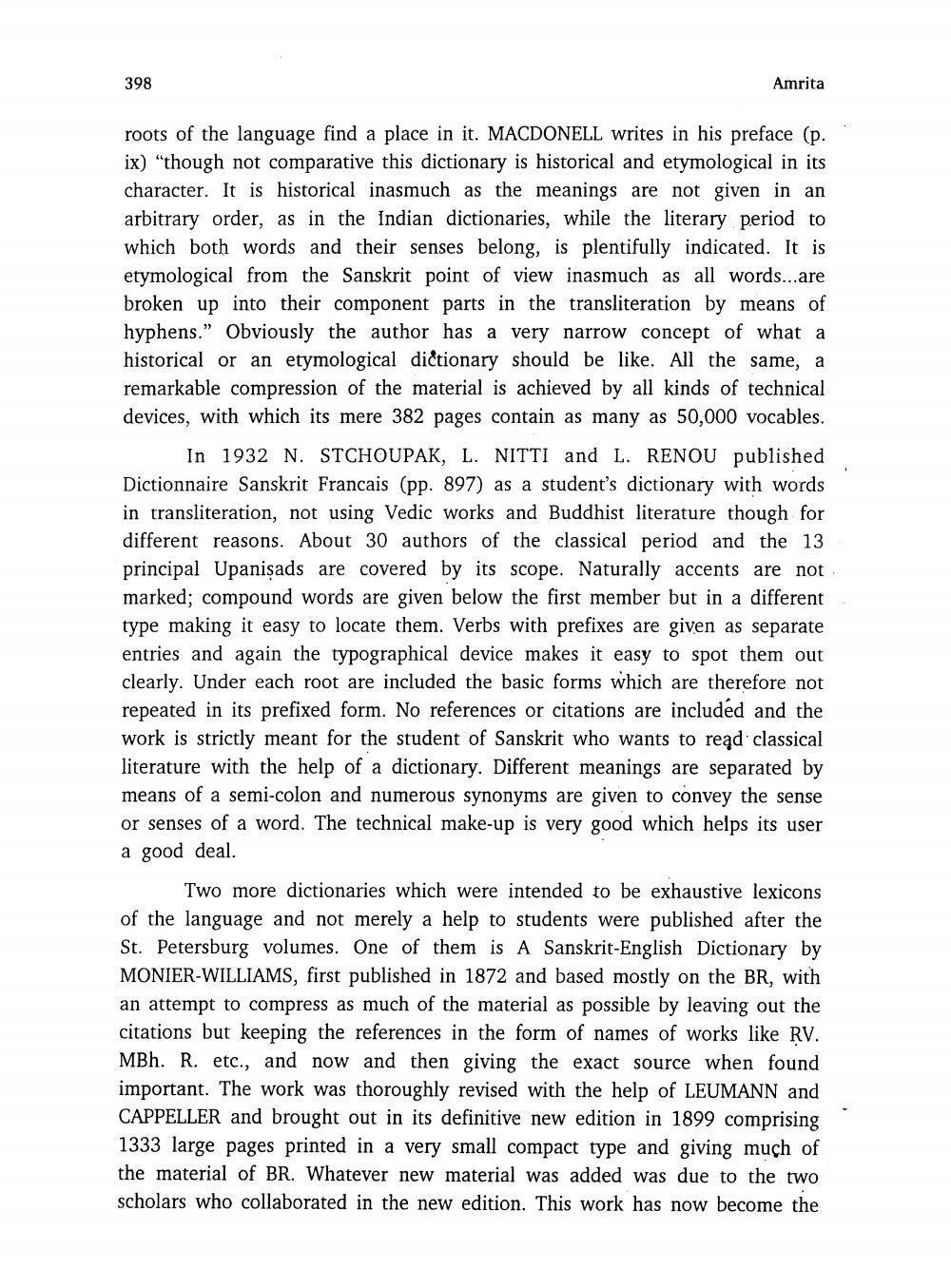________________
398
Amrita
roots of the language find a place in it. MACDONELL writes in his preface (p. ix) "though not comparative this dictionary is historical and etymological in its character. It is historical inasmuch as the meanings are not given in an arbitrary order, as in the Indian dictionaries, while the literary period to which both words and their senses belong, is plentifully indicated. It is etymological from the Sanskrit point of view inasmuch as all words...are broken up into their component parts in the transliteration by means of hyphens." Obviously the author has a very narrow concept of what a historical or an etymological dictionary should be like. All the same, a remarkable compression of the material is achieved by all kinds of technical devices, with which its mere 382 pages contain as many as 50,000 vocables.
In 1932 N. STCHOUPAK, L. NITTI and L. RENOU published Dictionnaire Sanskrit Francais (pp. 897) as a student's dictionary with words in transliteration, not using Vedic works and Buddhist literature though for different reasons. About 30 authors of the classical period and the 13 principal Upanisads are covered by its scope. Naturally accents are not marked; compound words are given below the first member but in a different type making it easy to locate them. Verbs with prefixes are given as separate entries and again the typographical device makes it easy to spot them out clearly. Under each root are included the basic forms which are therefore not repeated in its prefixed form. No references or citations are included and the work is strictly meant for the student of Sanskrit who wants to read classical literature with the help of a dictionary. Different meanings are separated by means of a semi-colon and numerous synonyms are given to convey the sense or senses of a word. The technical make-up is very good which helps its user a good deal.
Two more dictionaries which were intended to be exhaustive lexicons of the language and not merely a help to students were published after the St. Petersburg volumes. One of them is A Sanskrit-English Dictionary by MONIER-WILLIAMS, first published in 1872 and based mostly on the BR, with an attempt to compress as much of the material as possible by leaving out the citations but keeping the references in the form of names of works like RV. MBh. R. etc., and now and then giving the exact source when found important. The work was thoroughly revised with the help of LEUMANN and CAPPELLER and brought out in its definitive new edition in 1899 comprising 1333 large pages printed in a very small compact type and giving much of the material of BR. Whatever new material was added was due to the two scholars who collaborated in the new edition. This work has now become the




